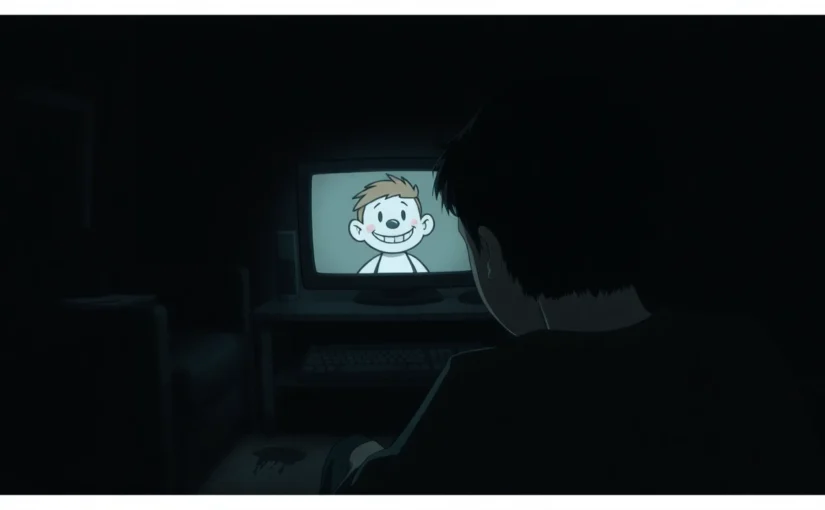Unveiling the Darkness of BLOODMONEY: A Psychological Horror That Tests Morality
In the realm of indie horror and psychological thrillers, few games manage to evoke such intense emotional and moral introspection as blood money. This dark clicker game plunges players into a disturbing journey where each click not only brings monetary gain but also chips away at the player’s moral boundaries. With its haunting visuals, unsettling narrative, and deeply psychological mechanics, BLOODMONEY challenges players to confront what they are willing to sacrifice for survival. This article explores the intricate layers of gameplay, narrative depth, community insights, and the ethical dilemmas that make BLOODMONEY a uniquely intense experience in the world of dark gaming.
The Narrative: Moral Dilemmas in a Life-or-Death Situation
At its core, BLOODMONEY tells a harrowing story of desperation and moral compromise. You play as an individual diagnosed with a severe medical condition, desperately needing $25,000 for lifesaving treatment. With time running out, your options seem bleak—until an unexpected opportunity presents itself through a cheerful character named Harvey. Harvey offers a bizarre proposition: click on him repeatedly to earn money. Yet, this seemingly simple mechanic quickly spirals into a moral quagmire.
This narrative setup immerses players in a moral dilemma: how far are you willing to go when your own life hangs in the balance? The game masterfully blurs the line between innocence and malevolence, as Harvey’s cheerful demeanor contrasts sharply with the increasing violence of the tools at your disposal. The story is designed to make players question their ethics, as every decision impacts Harvey’s suffering and shapes the game’s multiple endings. The tension between survival and morality is palpable, making BLOODMONEY much more than a typical clicker game—it becomes a psychological testing ground.
Gameplay Mechanics and Player Choices
Clicking Mechanics and Earning Money
The core gameplay revolves around clicking on Harvey, a bright, cheerful character whose innocence is initially apparent. Each click generates a fixed amount of money, pushing you closer to your goal of $25,000. However, as you click, Harvey visibly reacts to the pain, with visual cues and dialogue changes gradually revealing his increasing suffering. This simple mechanic is layered with complexity, as players must decide how many clicks to perform and when to purchase upgrades.
Upgrade System and Increasing Violence
The shop becomes a pivotal element of gameplay, offering a series of upgrades that amplify earnings. These upgrades range from benign items like pillows for “pillow fights” to more violent tools such as needles, hammers, and knives. Each purchase boosts profit but at a severe moral cost. The game subtly tracks your choice patterns—using more violent tools signifies a willingness to maximize profit regardless of Harvey’s suffering, while choosing less harmful options indicates a desire to minimize harm.
Multiple Pathways and Endings
One of the game’s strengths lies in its multiple pathways. Depending on your choices—whether you prioritize minimal pain, moderate violence, or maximum efficiency—you unlock different endings. The blood money game offers three distinct conclusions: The Good Ending, the Normal Ending, and the Bad Ending. Each reflects a different moral stance, encouraging players to reflect on their decisions and their implications.
Visual and Emotional Design: Creating Unsettling Atmospheres
BLOODMONEY excels in crafting an atmosphere that evolves from lighthearted to deeply disturbing. The game uses subtle visual cues—Harvey’s changing expressions, the increasingly violent imagery, and the deteriorating environment—to evoke a sense of unease. The art style is intentionally minimalist but impactful, making each visual shift a powerful signal of moral decline.
The emotional impact is heightened through dialogue and Harvey’s reactions. Early in the game, Harvey appears cheerful and naive, but as the pain and violence escalate, his demeanor shifts to fear, suffering, and helplessness. The game’s sound design complements this, with unsettling background noises and disturbing sound effects that heighten the psychological horror experience.
The Role of Harvey: Innocence and Suffering
Harvey serves as a symbol of innocence caught in a cruel game. His cheerful, naive persona initially evokes a sense of empathy, making the moral choices even more visceral. Observant players have noted subtle details suggesting Harvey might not fully understand what is happening—his surprise at violent tools like knives and hammers hints at innocence or ignorance, adding a layer of moral ambiguity.
This duality creates a compelling dynamic: Harvey is both a victim and a mirror of the player’s choices. His reactions, visual cues, and dialogue serve to deepen the emotional and moral stakes of the game. As Harvey’s suffering intensifies, players are forced to confront their own moral boundaries—how much pain are they willing to inflict to survive?
Upgrades and Increasing Violence: A Risk-Reward Dynamic
Tools of Maximal Profit
The upgrade system offers a variety of tools, each designed to increase earnings at the expense of Harvey’s well-being. Early upgrades are relatively harmless, but the game progressively introduces more violent options. For example, purchasing a needle might cause minimal pain, but buying a hammer or a knife results in significant suffering for Harvey.
Visual and Psychological Consequences
Each upgrade not only boosts profit but also visually alters Harvey—his appearance becomes more distressed, with bruises, cuts, and a deteriorating demeanor. Psychologically, the game makes players feel the weight of their choices through Harvey’s reactions, dialogue, and visual cues. The more violent the upgrade, the darker the tone, testing players’ moral resolve and pushing them toward the ultimate question: how much are they willing to sacrifice?
Multiple Endings and Moral Consequences
The culmination of player choices leads to three possible endings, each illustrating a different moral stance:
The Good Ending
Achieved by minimizing Harvey’s suffering and avoiding violent tools, this ending showcases a moral high ground. It emphasizes compassion and restraint, suggesting that survival doesn’t necessitate moral compromise. This route often results in a longer journey to reach the financial goal but offers a sense of integrity.
The Normal Ending
This middle ground involves moderate violence, using tools like scissors or needles. It reflects a compromise—recognizing the need to push boundaries but not crossing the line into outright brutality. The ending offers a balanced perspective, highlighting the moral ambiguity inherent in desperate situations.
The Bad Ending
By maximizing violence and choosing the most destructive tools like hammers and knives, players unlock the worst outcome. Harvey’s suffering reaches its peak, and the game’s tone becomes overwhelmingly dark. This ending questions the player’s moral integrity, illustrating how greed and efficiency can come at a terrible human cost.
Community Insights and Player Reactions
Since its release, BLOODMONEY has garnered a dedicated community of players and critics who analyze its moral complexity. Many note how the game’s subtle design elements—Harvey’s reactions, visual cues, and dialogue—allow for nuanced gameplay that rewards attentive and ethical decision-making. Video analyses, such as those explaining the full story and all endings, reveal how player choices influence the narrative and how the game subtly tracks playstyle beyond obvious metrics.
Players have shared emotional reactions to Harvey’s suffering, with some describing feelings of guilt and empathy. The game’s ability to evoke genuine emotional responses demonstrates its effectiveness as a psychological horror experience. Discussions often revolve around the moral implications: Is maximizing profit worth Harvey’s pain? Can one justify violence in desperate circumstances? These debates extend beyond the game, prompting introspection about real-world ethics.
Psychological Impact and Ethical Questions
BLOODMONEY is more than just a game—it’s a mirror held up to human nature. It challenges players to consider their own moral boundaries, especially when survival is at stake. The emotional design—Harvey’s reactions, visual cues, and dialogue—creates an immersive experience that leaves a lasting impression. Many players report feeling genuinely disturbed, reflecting on the ethical implications of their choices.
The game raises profound questions: How far would you go for your own survival? Is it ever justified to inflict pain on others, even if it ensures your own safety? By forcing players into these dilemmas, BLOODMONEY becomes a tool for moral reflection, illustrating the duality of human nature—innocence versus malevolence, compassion versus greed.
The Desperate Situation and Harvey’s Proposition
The game’s premise hinges on a highly relatable and intense scenario: needing urgent medical funds. Harvey’s proposition is deceptively simple—click to earn money—yet it quickly becomes a profound moral test. As the clicks accumulate, Harvey’s pain intensifies, and the game’s tone darkens, making every decision weighty.
Harvey’s cheerful demeanor initially masks the horror of the situation, but as the game progresses, his reactions and visual deterioration reveal his suffering. The player is left to ponder: are they helping Harvey, or merely exploiting him? The game masterfully uses this dilemma to explore themes of morality, desperation, and the human capacity for cruelty.
The Hidden Depths: The Duality of Humanity
One of BLOODMONEY’s most intriguing aspects is its subtle exploration of human nature. Harvey, representing innocence and hope, contrasts sharply with the dark shop and violent tools, which symbolize darker forces or inherent evil. The game hints that Harvey might not fully understand the implications of the tools—his surprise at violent items like knives suggests innocence or ignorance.
This duality prompts players to reflect on their own motives—are we inherently good, or do desperate circumstances reveal our darker sides? The game’s design suggests that morality is fluid, shaped by context and necessity. It challenges players to consider whether their choices are truly about survival or if they reveal their underlying values.
The Final Choice: The Moral Crossroads
As you approach your financial goal, the game reaches a climax. The final decision hinges on whether you choose to minimize Harvey’s suffering or maximize efficiency, regardless of the human cost. The outcome depends entirely on your gameplay style:
- Minimize harm: Opt for less violent upgrades, show compassion, and achieve the goal with less suffering—culminating in the Good Ending.
- Moderate violence: Use some violent tools like scissors or needles, leading to the Normal Ending.
- Maximize violence: Use all available violent tools, inflicting maximum pain—culminating in the Bad Ending.
This choice encapsulates the game’s core message: morality in survival scenarios is complex and multifaceted. It pushes players to confront their own ethics, making BLOODMONEY a powerful narrative about human nature under pressure.
Related Games and Community Connection
BLOODMONEY shares thematic elements with other psychological horror and moral dilemma games, like “Don’t Forget” or classic titles exploring human morality. Its niche appeal resonates with players who enjoy narrative-rich, emotionally charged experiences. Connecting with the community through forums, gameplay videos, and analysis helps deepen understanding and appreciation of its layered storytelling.
Fans often discuss how BLOODMONEY’s mechanics and narrative reflect real-life dilemmas: how far would one go for survival? What moral boundaries are acceptable? These conversations extend beyond the game, fostering a community that explores ethics, psychology, and the nature of human cruelty and kindness.
Conclusion: The Power of Moral Choices in Gaming
BLOODMONEY stands out as a compelling example of how video games can serve as tools for moral reflection. Its disturbing yet deeply emotional narrative forces players to confront uncomfortable truths about human nature and morality. Through its innovative gameplay mechanics, subtle visual cues, and thought-provoking endings, the game exemplifies how interactive media can challenge perceptions and evoke genuine emotional responses.
In the end, BLOODMONEY is not just about earning blood money; it’s about understanding the darkness within us all and contemplating the choices we make when faced with desperation. Are you willing to cross moral lines for survival? The game leaves you pondering long after the screen goes dark, reminding us that sometimes, the greatest horror is not in the game itself but within our own moral boundaries.

